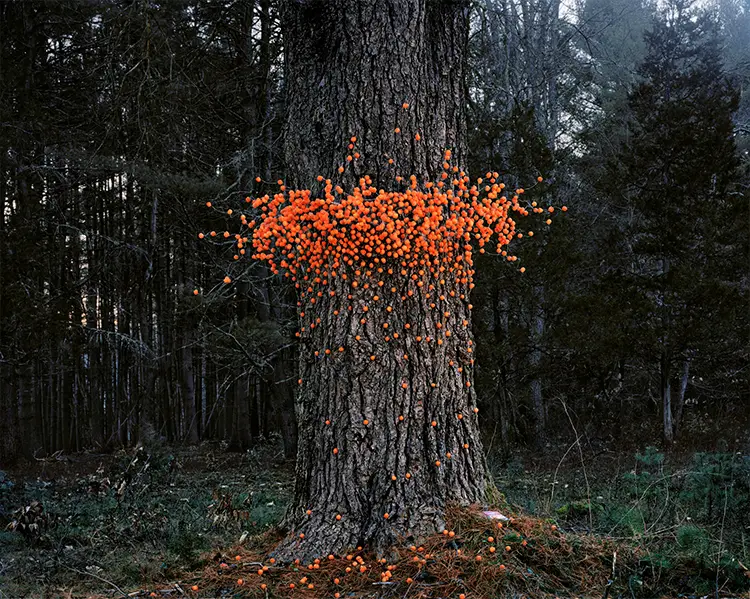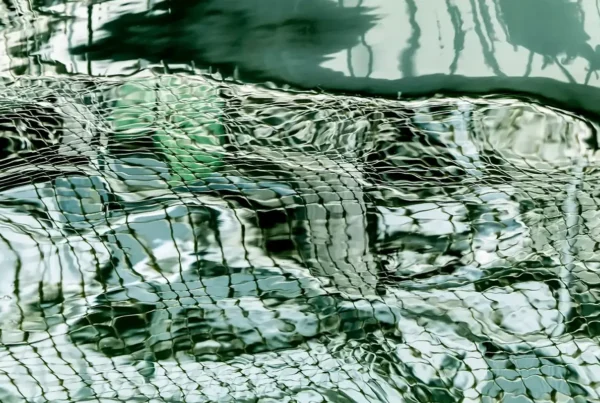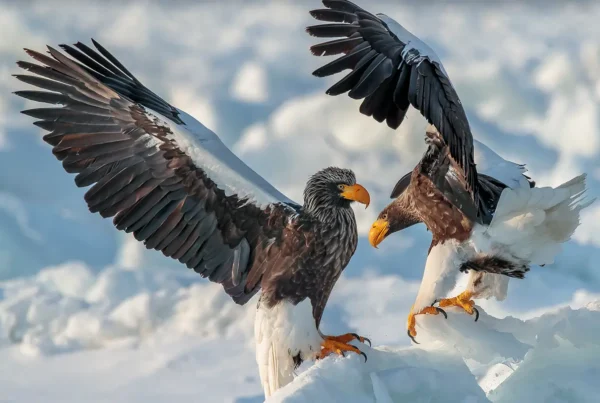Reframing the Familiar
In the charged stillness of 2020, when the world slowed to a halt, Thomas Jackson found a new artistic momentum. The isolation brought on by pandemic lockdowns did more than interrupt daily life—it compelled a reexamination of consumption, movement, and creative process. For Jackson, this disruption became an unexpected catalyst, pressing him to pare down his materials and sharpen his focus. With travel restricted, he returned to the same Northern California landscapes repeatedly, discovering fresh perspectives within their worn contours. This deepened relationship with his surroundings prompted him to work exclusively with nylon tulle, a fabric whose physical properties change dramatically with wind, arrangement, and light. The choice proved transformative: depending on its interaction with the air, the tulle could appear solid, fluid, fiery, or smoke-like, embodying multiple states in a single installation.
Faced with new logistical challenges, Jackson’s practice evolved in other unanticipated ways. In earlier years, setting up installations on beaches required cumbersome equipment—bulky tripods and extra assistance to transport them. But in the constraints of the pandemic, with no additional crew available, Jackson turned his attention to the environment itself. Driftwood became both support and collaborator, allowing his installations to be not only lighter and more portable but also more responsive to the landscape. This shift in approach blurred the boundary between artwork and site, grounding his sculptures more deeply in their natural contexts. The results were installations that did not dominate their settings but instead grew from them, subtly reflecting the textures and rhythms of their environment.
Perhaps the most profound shift in Jackson’s 2020 practice was his decision to engage directly with the wind. Rather than viewing nature as a backdrop, he began treating it as a dynamic creative partner. Each installation became a dialogue with the offshore breezes of Northern California—unpredictable, forceful, and alive. Of the twenty or so pieces he built that year, thirteen failed outright, undone by the same elemental energy he sought to harness. Yet these failures became instructive, revealing that resistance to natural forces often led to aesthetic and structural collapse. When Jackson worked in harmony with the wind, shaping his forms to yield rather than oppose, his sculptures came alive, animated not just by intention but by interaction.
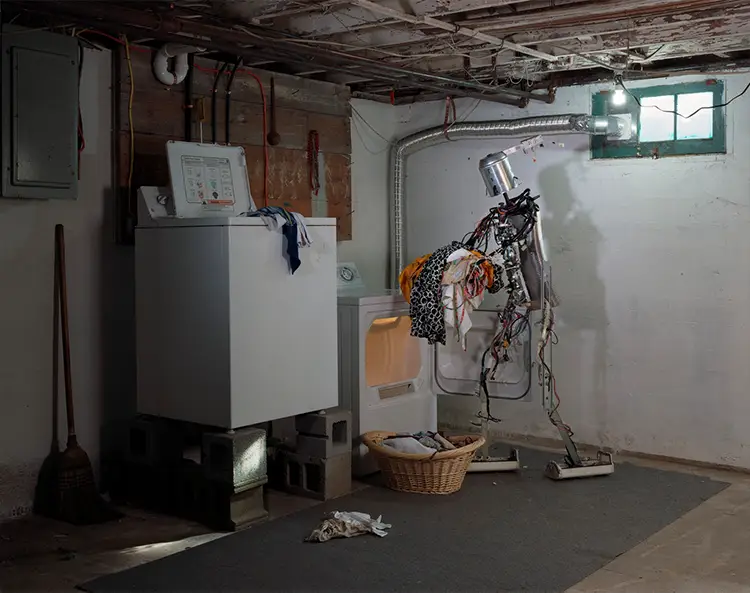
Thomas Jackson: Swarms, Suspensions, and the Art of Disruption
The series Emergent Behavior, created between 2011 and 2016, marked a pivotal moment in Jackson’s career, where his installations took to the air and entered into provocative tension with their environments. Drawing conceptual inspiration from the natural patterns of self-organizing systems—such as bird flocks, fish schools, and insect swarms—Jackson crafted hovering sculptural forms that seemed to both belong and intrude. These images do more than depict an uncanny juxtaposition of form and location; they intentionally stir the viewer’s primal reactions of awe and unease. The works embody a curious tension between the natural and the synthetic, urging viewers to question what is real, what is staged, and where the boundaries lie between the two.
In constructing these floating entities, Jackson often employed surprising materials—items that might be mundane or disposable in another context—giving them new life as objects of mystery and intrigue. Whether brightly colored plastic cups or feathery strands of tulle, these components gained a strange vitality when arranged into dense, airborne masses. The locations Jackson selected were equally critical: forests, coastlines, fields, and other natural landscapes served as counterpoints to the manmade textures of his sculptures. This deliberate collision of organic setting and artificial form functioned as a visual experiment, pressing viewers to reassess their assumptions about beauty, order, and chaos.
Jackson’s compositional strategies in Emergent Behavior hinge on displacement—not simply of objects, but of expectation. By placing fabricated clusters in places they seem not to belong, he destabilizes the visual grammar of the landscape. These interventions force a pause, encouraging viewers to consider how constructed objects might mimic—or mock—the strategies of nature. Through this friction, Jackson proposes a nuanced reflection on human interaction with the environment: one where mimicry, disruption, and adaptation all share space. His installations are not mere intrusions; they are questions posed in three dimensions, asking how artificial order and wild systems might co-exist or clash in unexpected ways.
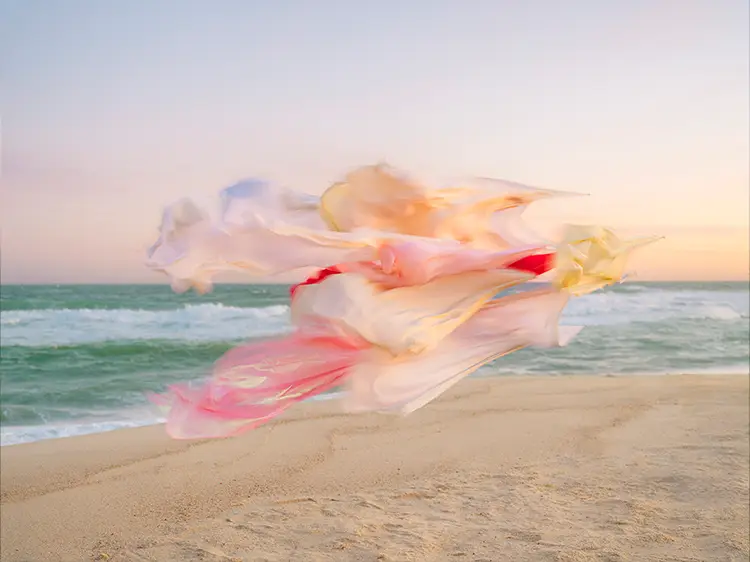
Narratives of Alienation and Return
In The Robot Series, Thomas Jackson shifts from visual abstraction toward narrative allegory, using a solitary robot as a surrogate for humanity’s fraught relationship with the environment. The robot, rendered with subtle humor and heavy symbolism, wanders through natural landscapes like a fallen protagonist from a mythic tale. This character’s journey—equal parts absurd and poignant—captures the dissonance between technological advancement and ecological stewardship. Jackson’s vision is not grounded in hope or despair, but in confrontation: a reckoning with the contradictions that define our treatment of the natural world.
What distinguishes The Robot Series is its fusion of science fiction aesthetics with compositional references drawn from medieval storytelling forms. Jackson borrows the narrative cadence of tapestries and religious iconography to underscore the robot’s symbolic function. This layering of references situates the work in both the past and future, suggesting that the conflict between nature and artifice is neither new nor easily resolved. The robot, rather than being villainous or heroic, becomes a lens through which we see our own impulses—to control, to exploit, to reshape—and the inevitable repercussions of those desires. Jackson uses the figure not just as character, but as commentary, reflecting our detachment from ecosystems we continue to alter irreversibly.
Through these photographic vignettes, Jackson addresses the emotional volatility that nature provokes in us: reverence, fear, attraction, and guilt, often experienced simultaneously. The robot’s inability to assimilate with the wilderness mirrors our own struggles to live in balance with it. The series confronts the viewer with a darkly comedic fatalism—no matter how advanced our technology becomes, nature’s retribution feels both imminent and deserved. Jackson’s work underscores this with a tone that is visually engaging but thematically unsettling. By portraying the robot as a tragicomic figure lost in a world it cannot command, he invites us to reflect on whether we are following a similar path of alienation and unintended consequence.
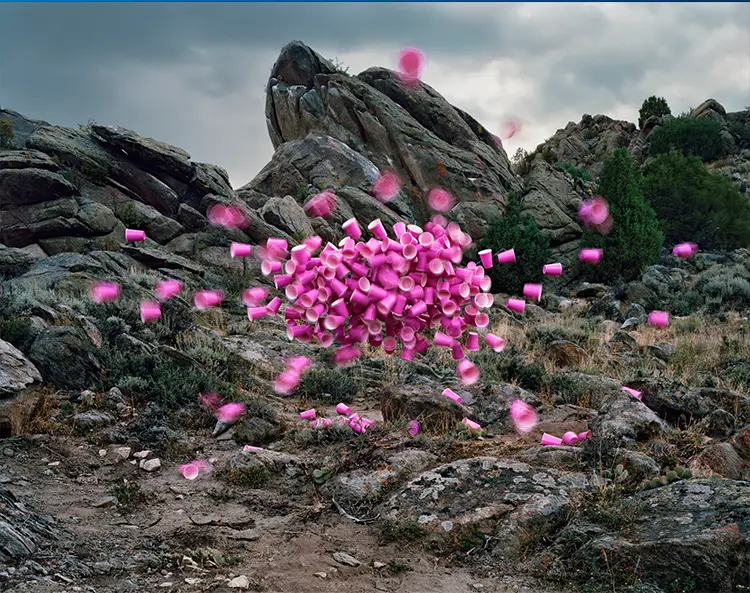
Thomas Jackson: Order, Chance, and the Invisible Collaborator
Thomas Jackson’s artistic evolution is inseparable from his background. Born in Philadelphia and raised in Providence, he pursued a degree in History at the College of Wooster before embarking on a career in publishing and journalism in New York City. His time as an editor and reviewer immersed him in the world of visual storytelling, particularly through photography books, eventually guiding him to the camera as his own creative tool. Initially drawn to the street photography of Garry Winogrand, Jackson explored urban scenes before turning toward landscapes, and ultimately, installation-based photographic work that merges sculpture, movement, and setting into a unified whole.
His installations are notable not only for their aesthetic vibrancy—often contrasting synthetic bursts of color against subdued natural settings—but for the philosophical questions they raise. In Jackson’s photographs, everyday objects take on strange new roles, hovering, swarming, or collapsing into intricate formations that reference biological systems and weather patterns. This approach upends the typical human desire to control or isolate nature. Instead, Jackson’s work often reveals nature as the ultimate director: wind, gravity, and environment play active roles in shaping the outcome of each piece. The wind, in particular, has become a central force in his process, pushing him to embrace unpredictability and allow chance to guide the final composition.
Jackson’s work has garnered significant recognition and institutional support. He has exhibited at venues such as The Brooks Museum in Tennessee and the Bolinas Museum in California, and his pieces are held in numerous collections including Delta Airlines, JP Morgan Chase, and MIT. His acclaim includes being named a Critical Mass Top 50 photographer and winning the installation/still-life category of PDN’s The Curator award. Though largely self-taught, Jackson’s synthesis of photography, sculpture, and natural phenomena places him at the forefront of contemporary installation photography. His images don’t merely capture an object or moment; they stage a live negotiation between structure and entropy, control and surrender, asking viewers to consider how art might become a conversation with the elements themselves.
